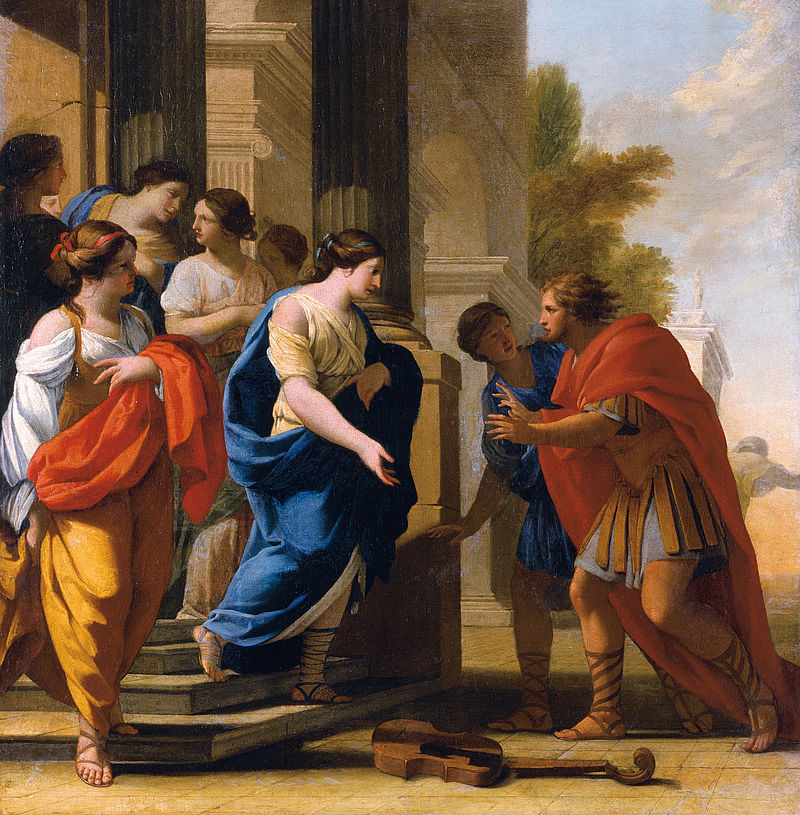Poliphilo encounters the Nymph Philtronia (at the Gates of Love) (Scene from Francesco Colonna’s Hypnerotomachia Poliphili (first edition 1499))
Eustache Le Sueur (1616 - 1655)
Framesize 126.00 x 125.00 x 16.00 cm
Le Sueur owed his first major commission to his teacher Vouet: the series on Francesco Colonna’s (1433–1527) Renaissance novel "Hypnerotomachia Poliphili, Poliphilo’s Strife of Love in a Dream" (Italian first edition 1499), which enjoyed great success after the French edition appeared in 1556 under the scholar King Francis I (1494–1547), who had enjoyed a humanist education. Of the eight paintings made between 1636 and 1644 as designs for tapestries, four have survived.
Poliphilo dreams of his beloved, Polia, and sets out to look for her and the legendary island of Cytherea. He loses his way, falls asleep, and in a second dream he embarks on an adventurous voyage through enchanted forests, paradisiac gardens and fantastic architectural landscapes inhabited by all manner of mythical creatures and gods. Poliphilo encounters two nymphs, Logistica (reason) and Thelema (will). With them, he reaches three gates chiselled into rocks and labelled "Gloria Dei" (glory of God), "Gloria mundi" (glory of the world) and "Mater amoris" (love). Poliphilo chooses love. Logistica, who cannot change his mind, angrily throws her lute to the ground and hurries off.
The Salzburg painting depicts this very scene – except that Le Sueur chose classical architecture as a background. His figures are graceful, with clear contours, and draped in billowy robes in intense colours – accentuated by shades of red-orange, blue and ochre. Poliphilo’s choice ultimately leads him to his beloved. When they arrive on the island of Cytherea, he attempts to embrace Polia, but she vanishes – it all turns out to be a dream.
HABERSATTER Thomas: Le Sueur Eustache, Poliphiles encounters the nymph Philtronia, scene from Francesco Colonna’s Hypnerotomachia Poliphili, in: DUCKE Astrid, HABERSATTER Thomas, OEHRING Erika: Masterworks. Residenzgalerie Salzburg. Salzburg 2015, p. 126


